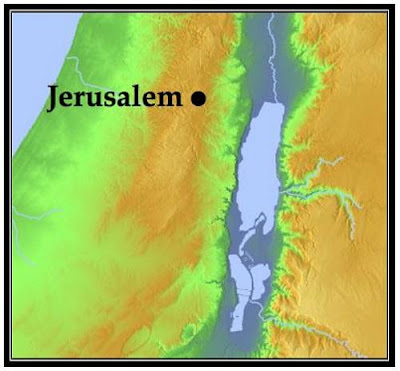DIGGING UP THE BIBLE
Important Archeological Finds that help Us Understand Scripture
pdf
Dr. Paul Manuel—2017
Important Archeological Finds that help Us Understand Scripture
Dr. Paul Manuel—2017
 |
| Caiaphas Ossuary (1st century AD) |
This ornate bone box, one of twelve from a burial cave at Jerusalem discovered in 1990, bears the inscription: "Joseph, son of Caiaphas." It is 14.5 inches high by 29.5 inches long, and held the remains of a 60-year old male. The box is now at The Israel Museum in Jerusalem, the bones having been reburied on the Mount of Olives.
According to Josephus, Joseph Caiaphas (i.e., Caiaphas, son of Joseph), who held the office A.D. 18-36, was the leading temple official in Jesus' day, and it was before him that Jesus appeared at trial: "Those who had arrested Jesus took him to Caiaphas, the high priest" (Matt 26:57).
As chief priest, Caiaphas had considerable sway over the Jerusalem Sanhedrin, the primary legislative and judicial body in 1st century Jewish society. Representatives of that group met with him at his home to discuss Jesus' fate: "The chief priests and the elders of the people assembled in the palace of the high priest, whose name was Caiaphas" (Matt 26:3). Caiaphas was also the main liaison with the Roman government, a political position that further enhanced his power and prestige. It was during his tenure that James, John, and Jesus were all executed, although the deaths of James and John were by the direction of Herod; Jesus' death was by the permission of Pilate:
[Herod] had John beheaded in the prison. (Matt 14:10)
[Herod] had James...put to death with the sword. (Acts 12:2)
[Pilate] handed [Jesus] over to be crucified. (Matt 27:26)
Caiaphas was in office at the time of all three men, his term being the longest as high priest (18 years), but there is no evidence he was involved in the deaths of John and James, yet the high-profile nature of their lives certainly did not go unnoticed by him. His part in Jesus' death, however, remanding the rabbi to the Romans, was decisive in sealing his execution: "Caiaphas was the one who had advised the Jewish authorities that it would be good if one man died for the people" (John 18:14).
The high priest was dependent on support from the local gentile in charge to secure the death penalty and transferred custody of the alleged insurrectionist: "The Jewish authorities led Jesus from Caiaphas to the palace of the Roman governor" (John 18:28). It was a decision that confirmed his earlier prediction: "he prophesied Jesus would die for the Jewish nation" (John 11:51).
Significance for Biblical Studies: The Caiaphas Ossuary, if it did belong to the high priest, is further historical confirmation of a New Testament figure. It is also an illustration of burial customs in 1st century Judaism for the wealthy and famous.
For a pdf go here.

No comments:
Post a Comment
Relevant and civil comments are welcome. Whether there will be any response depends on whether Dr. Manuel notices them and has the time and inclination to respond or, if not, whether I feel competent to do so.
Jim Skaggs